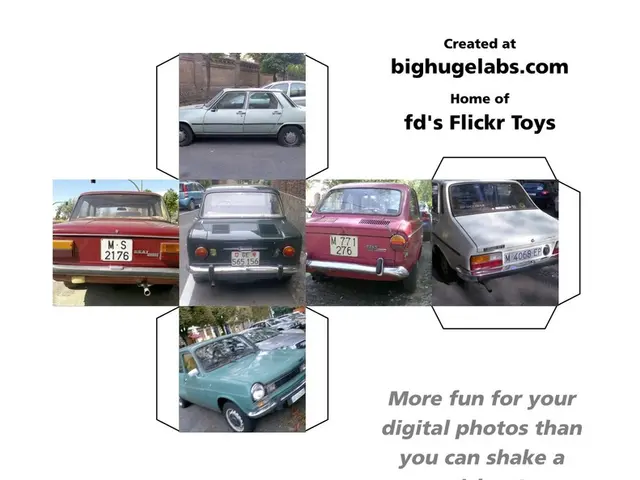China seeks to export gasoline-powered electric vehicles
In the motor world, some argue that electric vehicles (EVs) may not be the ultimate solution for all – at least not yet. Chinese automakers are proposing the use of gasoline generators to extend the range of EVs, creating what's known as Extended-Range Electric Vehicles (EREVs). However, Western drivers are taking a more cautious approach to this innovation.
At the Shanghai Auto Show, a number of electric models, including the Yangwang U8 and Exeed ET, boasted an impressive range of over 1000 kilometers. While these models run primarily on 100% electric power, they consume gasoline and emit toxic gases due to their small gasoline generator. This technology gained momentum in China in 2024, with over a million units sold and a 6% market share, according to McKinsey, compared to 28% for traditional EVs.
EREVs could see a broader global expansion in the coming years. For instance, Stellantis plans to offer an EREV version of its popular Ram 1500 pickup in the US, while Volkswagen intends to launch an EREV pickup in the US under its Scout brand. At the Shanghai show, German group PSA presented another large SUV equipped with an extended-range system as part of its counteroffensive in the Chinese market.
A concern among European and American drivers is the limited electrification of their markets, leading to an increased interest in plug-in hybrid models, such as EREVs. Volkswagen CEO Oliver Blume commented on the potential of EREVs, stating, "It's a good way to reduce the cost of entry for people into electric mobility. But electric will ultimately prevail."
According to a survey by McKinsey, after an explanation of the EREV concept, nearly a quarter of European and US respondents expressed interest in buying an EREV for their next vehicle purchase. The appeal of EREVs is particularly strong among American consumers, as they cater to long trips and activities that require heavy towing, like boating.
However, the future of EREVs in Europe remains uncertain due to the planned shift to a 100% electric market by 2035. The German government has requested exceptions for less polluting non-electric powertrains, but some question the viability of investing in EREV technology when it will eventually become obsolete. For now, Westerners should depend on their Chinese partners to leverage the unique needs and challenges of the US market.
While EREVs represent a niche market within the broader electric vehicle sector, their future success may depend on technological advancements, regulatory environments, and the evolving preferences of drivers. EREVs could play a pivotal role in bridging the gap between traditional fossil fuel vehicles and the fully electric future. However, significant improvements in battery technology and electric charging infrastructure, as well as competitive pricing, will be essential in ensuring their widespread adoption.
- Despite some arguing against them, electric vehicles (EVs) are being supplemented by Extended-Range Electric Vehicles (EREVs), a technology that uses gasoline generators to extend EV range.
- At the Shanghai Auto Show, electric vehicles, such as the Yangwang U8 and Exeed ET, demonstrated an impressive range of over 1000 kilometers, using EREV technology.
- Companies like Stellantis and Volkswagen are planning to introduce EREV versions of their popular pickup trucks in the US and China respectively, accommodating niche market needs.
- European drivers are showing increased interest in EREVs due to limited electrification in their markets, with nearly a quarter expressing interest in buying an EREV for their next vehicle purchase, according to a McKinsey survey.
- The appeal of EREVs is particularly strong in the US, catering to long trips and heavy-towing activities, such as boating.
- The future of EREVs in Europe is uncertain, given the planned shift to a 100% electric market by 2035, although exceptions for less polluting non-electric powertrains have been requested by the German government.
- The success of EREVs may depend on technological advancements, regulatory environments, and the evolving preferences of drivers, as they could play a vital role in bridging the gap between traditional fossil fuel vehicles and the fully electric future. However, significant improvements in battery technology, electric charging infrastructure, and competitive pricing will be crucial for their widespread adoption in the automotive business, lifestyle, and transportation industry.










